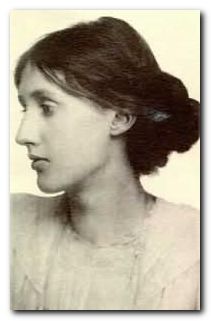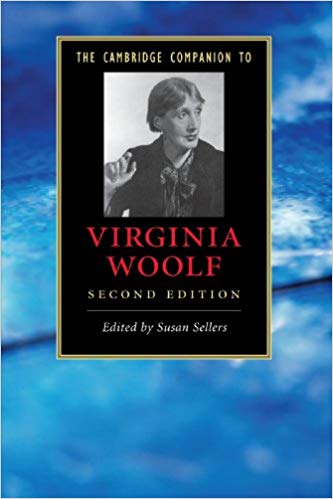tutorial, synopsis, commentary, and study resources
Happiness was probably written in early 1925. It is one of a number of short stories by Virginia Woolf set at a party in the Westminster home of Richard and Clarissa Dalloway, the hosts of the central social event in her novel Mrs Dalloway (1925)
Virginia Woolf
Happiness – critical commentary
This is a study in egoism and self-absorption of a particularly acute variety. Stuart Elton thinks of himself in the most self-congratulatory manner – likening himself to the petals of a rose.
He is socially rude, and is smug about his self-sufficiency – a state of being which is so fragile he is terrified of any unforeseen event in his life. He prides himself on having successfully avoided commitment to a woman earlier in his life, and he is typical of the male narcissist figures who appear in Virginia Woolf’s work. It is interesting to note that he finds solace in the very symbolically male physical object of a paper knife.
It has to be said that in all these short sketches and stories based on figures circulating in Clarissa Dalloway’s drawing room, there is a common theme of a failure of communication. Occasions which are designed to offer social interaction to her guests are revealed as a series of communication breakdowns, gulfs of empathy, and studies in solipsism.
It is also worth noting that Stuart Elton will still be playing with the paper knife when he appears again in A Simple Melody written later the same year – though he will be viewed from someone else’s perspective, in a far less critical light:
Mr Carslake saw him [Stuart Elton] standing alone lifting a paper knife up in his hands … Stuart was the gentlest, simplest of creatures, content to ramble all day with undistinguished people, like himself, and this oddity — it looked like affectation to stand in the middle of a drawing room holding a tortoise-shell paper knife in his hand — was only manner.
This may of course reveal a lack of perception and good judgement on Mr Carslake’s part, but it certainly illustrates Woolf’s penchant for expressing the relative nature of social perceptions.
Happiness – study resources
![]() The Complete Shorter Fiction – Vintage Classics [£6.74] Amazon UK
The Complete Shorter Fiction – Vintage Classics [£6.74] Amazon UK
![]() The Complete Shorter Fiction – Vintage Classics – Amazon US
The Complete Shorter Fiction – Vintage Classics – Amazon US
![]() The Complete Shorter Fiction – Harcourt edition – Amazon UK
The Complete Shorter Fiction – Harcourt edition – Amazon UK
![]() The Complete Shorter Fiction – Harcourt edition – Amazon US
The Complete Shorter Fiction – Harcourt edition – Amazon US
![]() Monday or Tuesday and Other Stories – Gutenberg.org
Monday or Tuesday and Other Stories – Gutenberg.org
![]() Kew Gardens and Other Stories – Hogarth reprint – Amazon UK
Kew Gardens and Other Stories – Hogarth reprint – Amazon UK
![]() Kew Gardens and Other Stories – Hogarth reprint – Amazon US
Kew Gardens and Other Stories – Hogarth reprint – Amazon US
![]() The Mark on the Wall – Oxford World Classics edition – Amazon UK
The Mark on the Wall – Oxford World Classics edition – Amazon UK
![]() The Mark on the Wall – Oxford World Classics edition – Amazon US
The Mark on the Wall – Oxford World Classics edition – Amazon US
![]() The Complete Works of Virginia Woolf – Kindle edition
The Complete Works of Virginia Woolf – Kindle edition
![]() The Cambridge Companion to Virginia Woolf – Amazon UK
The Cambridge Companion to Virginia Woolf – Amazon UK
![]() Virginia Woolf – Authors in Context – Amazon UK
Virginia Woolf – Authors in Context – Amazon UK
![]() The Cambridge Introduction to Virginia Woolf – Amazon UK
The Cambridge Introduction to Virginia Woolf – Amazon UK
Happiness – story synopsis
Stuart Elton, a middle-aged bachelor, is in conversation with Mrs Sutton, a would-be actress. They actually exchange very few words, because his interior monologue is all about himself, and he perceives her as a menace to his precious sense of selfhood. He also has some unspecified ailment which prevents him from eating lobster.
She perceives him as happy and fortunate, and complains about not getting on in the theatre. But he isn’t listening to what she’s saying. She is exasperated by what seems to be his impregnable self-containment.
He feeds her scraps of inconsequential information, and meanwhile thinks of himself as if pursued by wolves. He thinks back to an earlier period of his life involving a woman from whom he eventually ‘recovered’. He is very glad not to be dependent upon anyone, and he feels that the slightest disturbance in the balance of his relationship with the outside world will shatter his sense of satisfaction.
Happiness – further reading
![]() Quentin Bell. Virginia Woolf: A Biography. New York: Harcourt Brace Jovanovich, 1972.
Quentin Bell. Virginia Woolf: A Biography. New York: Harcourt Brace Jovanovich, 1972.
![]() Hermione Lee. Virginia Woolf. New York: Alfred A. Knopf, 1997.
Hermione Lee. Virginia Woolf. New York: Alfred A. Knopf, 1997.
![]() Nicholas Marsh. Virginia Woolf, the Novels. New York: St. Martin’s Press, 1998.
Nicholas Marsh. Virginia Woolf, the Novels. New York: St. Martin’s Press, 1998.
![]() John Mepham, Virginia Woolf. New York: St. Martin’s Press, 1992.
John Mepham, Virginia Woolf. New York: St. Martin’s Press, 1992.
![]() Natalya Reinhold, ed. Woolf Across Cultures. New York: Pace University Press, 2004.
Natalya Reinhold, ed. Woolf Across Cultures. New York: Pace University Press, 2004.
![]() Michael Rosenthal, Virginia Woolf: A Critical Study. New York: Columbia University Press, 1979.
Michael Rosenthal, Virginia Woolf: A Critical Study. New York: Columbia University Press, 1979.
![]() Susan Sellers, The Cambridge Companion to Virginia Woolf, Cambridge University Press, 2010.
Susan Sellers, The Cambridge Companion to Virginia Woolf, Cambridge University Press, 2010.
![]() Virginia Woolf, The Common Reader. New York: Harvest Books, 2002.
Virginia Woolf, The Common Reader. New York: Harvest Books, 2002.
![]() Alex Zwerdling, Virginia Woolf and the Real World. Berkeley: University of California Press, 1986.
Alex Zwerdling, Virginia Woolf and the Real World. Berkeley: University of California Press, 1986.
Other works by Virginia Woolf
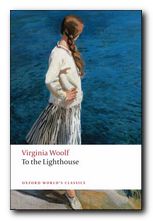 To the Lighthouse (1927) is the second of the twin jewels in the crown of her late experimental phase. It is concerned with the passage of time, the nature of human consciousness, and the process of artistic creativity. Woolf substitutes symbolism and poetic prose for any notion of plot, and the novel is composed as a tryptich of three almost static scenes – during the second of which the principal character Mrs Ramsay dies – literally within a parenthesis. The writing is lyrical and philosophical at the same time. Many critics see this as her greatest achievement, and Woolf herself realised that with this book she was taking the novel form into hitherto unknown territory.
To the Lighthouse (1927) is the second of the twin jewels in the crown of her late experimental phase. It is concerned with the passage of time, the nature of human consciousness, and the process of artistic creativity. Woolf substitutes symbolism and poetic prose for any notion of plot, and the novel is composed as a tryptich of three almost static scenes – during the second of which the principal character Mrs Ramsay dies – literally within a parenthesis. The writing is lyrical and philosophical at the same time. Many critics see this as her greatest achievement, and Woolf herself realised that with this book she was taking the novel form into hitherto unknown territory.
![]() Buy the book at Amazon UK
Buy the book at Amazon UK
![]() Buy the book at Amazon US
Buy the book at Amazon US
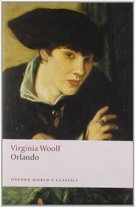 Orlando (1928) is one of her lesser-known novels, although it’s critical reputation has risen in recent years. It’s a delightful fantasy which features a character who changes sex part-way through the book – and lives from the sixteenth to the twentieth century. Using this device (which turns out to be strangely credible) Woolf explores issues of gender and identity as her hero-heroine moves through a variety of lives and personal adventures. Orlando starts out as an emissary to the Court of St James, lives through friendships with Swift and Alexander Pope, and ends up motoring through the west end of London on a shopping expedition in the 1920s. The character is loosely based on Vita Sackville-West, who at one time was Woolf’s lover. The novel itself was described by Nigel Nicolson (Sackville-West’s son) as ‘the longest and most charming love-letter in literature’.
Orlando (1928) is one of her lesser-known novels, although it’s critical reputation has risen in recent years. It’s a delightful fantasy which features a character who changes sex part-way through the book – and lives from the sixteenth to the twentieth century. Using this device (which turns out to be strangely credible) Woolf explores issues of gender and identity as her hero-heroine moves through a variety of lives and personal adventures. Orlando starts out as an emissary to the Court of St James, lives through friendships with Swift and Alexander Pope, and ends up motoring through the west end of London on a shopping expedition in the 1920s. The character is loosely based on Vita Sackville-West, who at one time was Woolf’s lover. The novel itself was described by Nigel Nicolson (Sackville-West’s son) as ‘the longest and most charming love-letter in literature’.
![]() Buy the book at Amazon UK
Buy the book at Amazon UK
![]() Buy the book at Amazon US
Buy the book at Amazon US
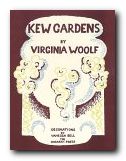 Kew Gardens is a collection of experimental short stories in which Woolf tested out ideas and techniques which she then later incorporated into her novels. After Chekhov, they represent the most important development in the modern short story as a literary form. Incident and narrative are replaced by evocations of mood, poetic imagery, philosophic reflection, and subtleties of composition and structure. The shortest piece, ‘Monday or Tuesday’, is a one-page wonder of compression. This collection is a cornerstone of literary modernism. No other writer – with the possible exception of Nadine Gordimer, has taken the short story as a literary genre as far as this.
Kew Gardens is a collection of experimental short stories in which Woolf tested out ideas and techniques which she then later incorporated into her novels. After Chekhov, they represent the most important development in the modern short story as a literary form. Incident and narrative are replaced by evocations of mood, poetic imagery, philosophic reflection, and subtleties of composition and structure. The shortest piece, ‘Monday or Tuesday’, is a one-page wonder of compression. This collection is a cornerstone of literary modernism. No other writer – with the possible exception of Nadine Gordimer, has taken the short story as a literary genre as far as this.
![]() Buy the book at Amazon UK
Buy the book at Amazon UK
![]() Buy the book at Amazon US
Buy the book at Amazon US
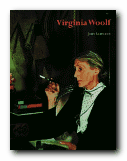 Virginia Woolf is a readable and well illustrated biography by John Lehmann, who at one point worked as her assistant and business partner at the Hogarth Press. It is described by the blurb as ‘A critical biography of Virginia Woolf containing illustrations that are a record of the Bloomsbury Group and the literary and artistic world that surrounded a writer who is immensely popular today’. This is an attractive and very accessible introduction to the subject which has been very popular with readers ever since it was first published..
Virginia Woolf is a readable and well illustrated biography by John Lehmann, who at one point worked as her assistant and business partner at the Hogarth Press. It is described by the blurb as ‘A critical biography of Virginia Woolf containing illustrations that are a record of the Bloomsbury Group and the literary and artistic world that surrounded a writer who is immensely popular today’. This is an attractive and very accessible introduction to the subject which has been very popular with readers ever since it was first published..
![]() Buy the book at Amazon UK
Buy the book at Amazon UK
![]() Buy the book at Amazon US
Buy the book at Amazon US
Virginia Woolf – web links
Virginia Woolf at Mantex
Biographical notes, study guides to the major works, book reviews, studies of the short stories, bibliographies, web links, study resources.
Blogging Woolf
Book reviews, Bloomsbury related issues, links, study resources, news of conferences, exhibitions, and events, regularly updated.
Virginia Woolf at Wikipedia
Full biography, social background, interpretation of her work, fiction and non-fiction publications, photograph albumns, list of biographies, and external web links
Virginia Woolf at Gutenberg
Selected eTexts of her novels and stories in a variety of digital formats.
Woolf Online
An electronic edition and commentary on To the Lighthouse with notes on its composition, revisions, and printing – plus relevant extracts from the diaries, essays, and letters.
Hyper-Concordance to Virginia Woolf
Search texts of all the major novels and essays, word by word – locate quotations, references, and individual terms
Orlando – Sally Potter’s film archive
The text and film script, production notes, casting, locations, set designs, publicity photos, video clips, costume designs, and interviews.
Women’s History Walk in Bloomsbury
Tour of literary and political homes in Bloomsbury – including Gordon Square, Gower Street, Bedford Square, Tavistock Square, plus links to women’s history web sites.
Virginia Woolf Society of Great Britain
Bulletins of events, annual lectures, society publications, and extensive links to Woolf and Bloomsbury related web sites
BBC Audio Essay – A Eulogy to Words
Charming sound recording of radio talk given by Virginia Woolf in 1937 – a podcast accompanied by a slideshow of photographs.
A Family Photograph Albumn
Leslie Stephen compiled a photograph album and wrote an epistolary memoir, known as the “Mausoleum Book,” to mourn the death of his wife, Julia, in 1895 – an archive at Smith College – Massachusetts
Virginia Woolf first editions
Hogarth Press book jacket covers of the first editions of Woolf’s novels, essays, and stories – largely designed by her sister, Vanessa Bell.
Virginia Woolf – on video
Biographical studies and documentary videos with comments on Virginia Woolf and the Bloomsbury Group and the social background of their times.
Virginia Woolf Miscellany
An archive of academic journal essays 2003—2014, featuring news items, book reviews, and full length studies.
© Roy Johnson 2014
More on Virginia Woolf
Virginia Woolf – short stories
Virginia Woolf – greatest works
Virginia Woolf – criticism
Virginia Woolf – life and works
